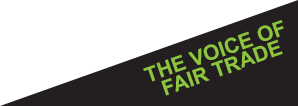In the first decades Fair Trade products were sold mainly by Fair Trade Organizations that had Fair Trade as the central ethos guiding their activities. In the seventies and eighties, Fair Trade products were sold to consumers mainly in world shops or Fair Trade shops.
In the second half of the 1980s, a new way of reaching the broad public was developed. A priest working with smallholder coffee farmers in Mexico and a collaborator of a Dutch church-based NGO conceived the idea of a Fair Trade label. Coffee bought, traded and sold respecting Fair Trade conditions would qualify for a label that would make it stand out among ordinary coffee on store shelves, and would allow not only Fair Trade Organizations, but any company to sell Fair Trade products. In 1988, the “Max Havelaar” label was established in The Netherlands. The concept caught on: within a year, coffee with the label had a market share of almost three percent.
In the following years, similar non-profit Fair Trade labelling organizations were set up in other European countries and in North America. In 1997 their worldwide association, Fairtrade Labelling International (FLO), was created. Today, FLO is responsible for setting international standards for Fair Trade products, certifying production and auditing trade according to these standards and for the labelling of products. The range of labelled products has become vast in the years since, and it continues to expand further. Fair Trade labelling has helped Fair Trade to go into mainstream business. Currently, more than two-thirds of Fair Trade products, are sold by mainstream catering and retailing.
Parallel to the development of labelling for products, the World Fair Trade Organization (WFTO) developed a monitoring system for Fair Trade Organizations. In order to strengthen the credibility of these organizations towards political decision-makers, mainstream business and consumers, the WFTO Fair Trade Organization Mark was launched in January 2004. The Mark was available to member organizations that met the requirements of the WFTO monitoring system and identifies them as registered Fair Trade Organizations. Today, WFTO uses the Guaranteed System to verify its member organisations and award the WFTO label, which is explained in detail here.





